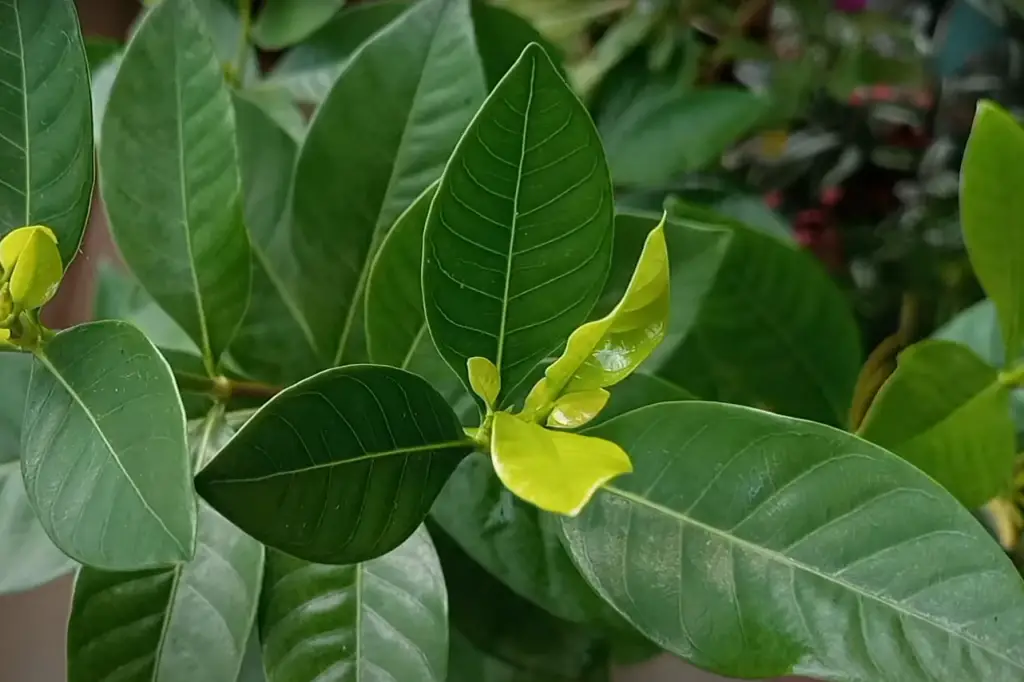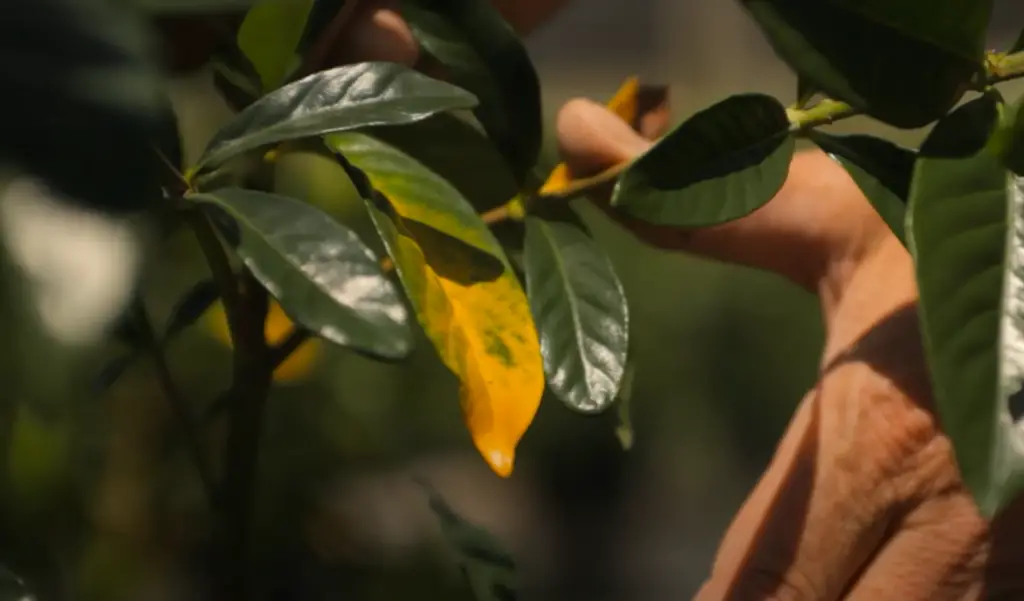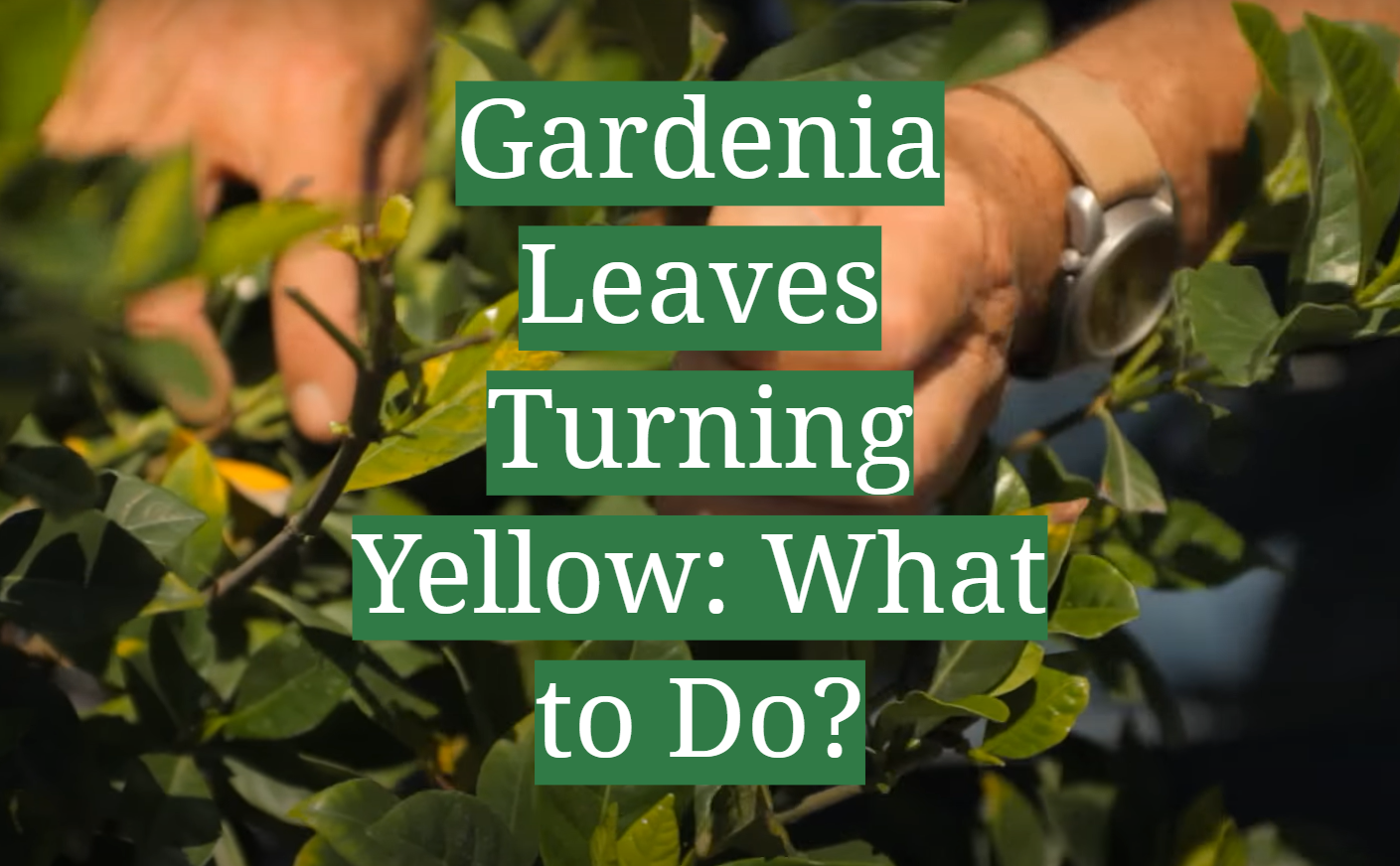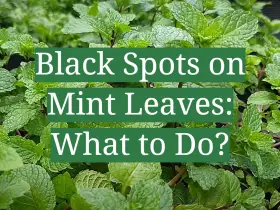Gardenia plants can bring a beautiful, fragrant touch to your garden and home. But when the leaves start turning yellow, it’s important to know what to do. This guide will provide all the information you need to identify and help correct any problems with your gardenia plant that may be causing its leaves to go yellow. We’ll cover everything from common causes of yellowing leaves to useful tips for keeping your gardenia healthy and vibrant.
General Guidelines For Growing Gardenias
Gardenias are beautiful, fragrant plants that can be grown indoors or outdoors. But they need the right growing conditions in order to thrive. Here are some guidelines:
- Light: Gardenias prefer bright, indirect light and will do best when placed near an east- or west-facing window indoors. Outdoors, plant them in a location where they’ll get ample morning sun and afternoon shade.
- Water: Water your gardenia deeply but infrequently; wait until the soil is dry before watering again. Avoid overwatering as this can cause yellowing of the leaves and even root rot if left unchecked. Make sure the pot has drainage holes for excess water to escape.
- Temperature: Gardenias prefer warm temperatures between 65 and 75 °F while they’re actively growing in the summer months. In the winter, they should be kept at a slightly cooler temperature between 60 and 65 °F.
- Soil: Choose a well-draining, acidic potting mix with an ideal pH of 5–6 since gardenias prefer acidic soil conditions.
- Fertilizer: Fertilize your gardenia once or twice per month during the growing season (spring and summer) using an acidified fertilizer specifically formulated for acid-loving plants such as gardenias, camellias, and azaleas.

By following these general instructions, you can give your gardenia the best chance of thriving.
Mild to Warm Climate
If you live in an area that experiences cold winters, it may be difficult for your Gardenia to survive the winter without some protection or special care.
Fairly Good Sunlight Conditions
Gardenias need at least 6 h of sunlight every day and will suffer if they receive too little. If your gardenia is in a spot that receives only partial sun, consider moving it to a brighter area.
Fertile Soil
Gardenias need fertile, well-drained soil to be healthy. When the soil is too dry or lacks nutrients, gardenia leaves will start yellowing. To prevent this from happening, make sure you are providing your gardenia with plenty of organic matter and fertilizing it regularly. You can also check the drainage of your soil by digging a hole in the ground and filling it up with water. If it takes more than an hour for the water to drain away completely, then your soil has poor drainage and needs to be improved.
Constantly Humid Soil
Gardenias need humid soil with a pH of 5.0-6.5 for them to grow properly and remain healthy.
To keep the flower’s soil consistently humid, one way is to use a tray filled with pebbles and water underneath the pot where the plant is planted. The water around the pebbles will evaporate and provide humidity around the roots of the plant – helping it retain moisture and stay healthy.
Another way to keep your gardenia’s soil consistently humid is to mist the leaves with a spray bottle every day or so (or even more frequently in extreme climates). This will provide direct moisture to the leaves and help them retain their vibrant color. If you don’t have access to a spray bottle, using a damp cloth can also work in providing humidity for your gardenias.
It’s important to remember that overwatering your gardenias can be just as damaging as underwatering them – so only give additional water if needed. Also make sure that you are not placing it directly under an AC vent or other source of dry air that could cause its leaves to start turning yellow due to insufficient humidity levels.
Gardenias Are Acidophilic Plants
Gardenias thrive in acidic soil. When the level of acidity is too low, this can cause leaves yellowing. To determine if this is the case for you, test the pH level of your soil with a home testing kit. The ideal range for gardenia soil should be between 5 and 6.

If your soil’s pH does not fall within that range, restoring its natural balance may resolve the issue of yellowing leaves. You will need to add an amendment such as peat or sulfur to increase the acidity levels. For best results, it’s important to do this over time rather than all at once — it can take several applications to reach the right balance.
If you’re uncertain of how to adjust your soil’s pH level, the professionals at your local garden center can provide helpful guidance. With a little bit of knowledge and effort, you should be able to get on top of the yellowing leaves issue in no time!
Regular Feeding
Gardenia needs regular, consistent feeding. Gardenias are heavy feeders and require a lot of nutrients to remain healthy.
To ensure proper nutrition, use a high quality fertilizer with an acidic base (around 6.0-6.5 pH). During the growing season, feed your gardenias every 4-6 weeks with this fertilizer and water thoroughly after each application. This will help provide the nutrients needed for strong growth and prevent yellowing leaves.
When the summer heat starts to fade, you can start to reduce the fertilizing frequency as well; aim for once per month during fall months until winter has fully arrived. If you live in a warmer region, you may want to keep fertilizing once per month until the cooler months have fully set in.
It’s also important to note that gardenias need regular watering throughout the year; if your soil is dry more than an inch down from the surface, it’s time to water. Aim for about 1-2 inches of water every week or so during summer (more in hotter climates) and reduce during winter months. Overwatering can lead to root rot, yellow leaves, and other issues, so be sure not to overdo it!
Why Gardenia Leaves Are Turning Yellow And What You Can Do About It
Most commonly, gardenias are affected by nutrient deficiencies, pest infestations, or over-watering.
Natural Aging
Yellowing leaves are a natural part of the gardenia’s life cycle. When they get older, their leaves will start to yellow and drop off.

If your plant isn’t losing too many leaves or showing other signs of distress, this could just be its way of shedding some dead foliage. Try not to worry — it’s perfectly normal for a gardenia!
Overwatering or Underwatering
Overwatering leads to root rot, which causes the leaves to turn yellow. This is usually due to too much water or soil that doesn’t drain well. On the other hand, underwatering can also lead to yellowing of the leaves if not enough water reaches the roots. In either case, fixing the issue requires adjusting your watering habits and ensuring that your gardenia has access to proper drainage.
Due to Root Rot
Gardenias are particularly susceptible to soil-borne fungi; if water is allowed to stand around the base of your plant, or if it’s planted in an overly wet spot, you may be faced with this problem. To prevent and treat root rot, ensure that your flower receives plenty of direct sunlight and good air circulation, and plant it in well-draining potting soil. If you suspect that root rot has taken hold, put on some gloves and inspect the roots – they should look white or creamy-colored. If they appear brownish or blackish, then take immediate action: remove as much of the affected soil from around the roots as possible and re-pot the plant in fresh, dry potting soil. You may also want to treat the roots with a fungicide specifically labeled for gardenias.
Does Not Have Proper Drainage
One of the main causes for gardenia leaves turning yellow is improper drainage. Ensure that water isn’t pooling or standing around the roots of your plants. Gardenias require well-draining soil that doesn’t hold onto excess moisture. You can improve drainage by adding a few inches of mulch, compost, or sand to the planting area and making sure there are no low spots where water can collect. If necessary, you could also raise the bed so that it slopes away from the plant and allows water to drain more easily.
Excessive Light
Most gardenias prefer bright indirect light, such as that which can be found near a north-facing window in a home. When placed in direct sun or too much light for an extended period, many gardenias will start to develop yellowing leaves.

If you think your plant might be getting too much sunlight, move it into a shadier spot where it receives bright but indirect light instead. This should eventually help the yellowing leaves clear up.
Too Little Light
In this case, try to move the plant to a brighter spot and increase the amount of sunlight exposure gradually.
To make sure you give your Gardenia just the right amount of light, it’s best to measure the intensity of the light in lumens with a lux meter or an app such as SunCalc. The ideal range for Gardenias lies between 1000-1500 lumens per square meter.
If you find that your Gardenia isn’t getting enough natural sunlight through windows or other sources, consider investing in artificial lighting such as LED grow lights or fluorescent lamps. These can be adjusted to provide your plant with the exact amount of light it needs.
Your Gardenia Got Too Cold
Sometimes, gardenias will turn yellow if they experience a drastic temperature drop.
If you think that cold weather is the issue with your gardenia, then the solution is simple: move it to a warmer spot! Pick a more sheltered outdoor area or bring it inside where temperatures will remain consistent.Nutrient Deficiency Is A Common Cause Of Leaf Yellowing In Gardenias
Nutrient deficiency is often the cause of yellowing leaves in gardenias. Common nutrient deficiencies include nitrogen, phosphorus, and potassium. If your flower’s leaves are turning yellow, it may be a sign that it is not getting enough of these essential nutrients. To determine if this is the case, you should test the soil around your plant to see what nutrient levels are present. Once you know which nutrients are deficient, you can address them by either applying fertilizer or adding compost to the soil. In addition to testing your soil for nutrient deficiencies, you should also check that your plants are receiving adequate amounts of water and sunlight. Without enough water and light, even properly fertilized plants will struggle to survive and thrive.
If nutrient deficiency isn’t the problem, then it may be due to other environmental factors. For example, too much shade or too little water can cause yellowing leaves in gardenias. If this is the case, you’ll need to adjust the environment around your plant accordingly. Move it so that it’s receiving enough sunlight and make sure you’re providing adequate amounts of water (but not too much) for optimal growth.

Finally, if none of these steps have addressed the issue, then there could be a pest infestation or disease that has infected your gardenia. In this case, you should contact an expert who will be able to help diagnose and treat the problem appropriately.
Overall, yellowing leaves in gardenias are usually caused by nutrient deficiency, environmental factors, or pests and diseases. By testing the soil for nutrients, adjusting the environment around your plant accordingly, and seeking help from an expert if needed, you should be able to address this issue before it becomes a bigger problem.
High Soil pH
Gardenias like to be grown in slightly acidic soil, with a pH between 5.0 and 6.5. If the soil has a higher pH than this, it can cause the leaves of the flower to turn yellow.
You should also check if there is any fertilizer residue in your soil as this can contribute to an increase in pH levels too. To remedy this issue, simply mix in some organic matter such as compost or peat moss into your garden beds and mix thoroughly until the nutrient level is reduced. With regular maintenance and testing of your soil’s pH, you can ensure that the health of your Gardenia is maintained. [1]FAQ
Should I remove yellow leaves from Gardenia?
Yes, yellow leaves on a gardenia should be removed. Removing them will help the plant to stay healthy and promote new leaf growth. You can remove yellow leaves by cutting them off at the base of the stem with clean, sharp scissors or pruning shears. Make sure that you wear gloves while doing this so as not to damage the plant’s delicate foliage. [2]
Why have my gardenia leaves turned yellow?
Gardenia plants are a popular and beautiful addition to any garden. However, if you’ve noticed the leaves on your gardenia turning yellow, you’re probably wondering what might be causing this issue and what you can do to fix it.
The good news is that yellowing of gardenia leaves can have many causes and fortunately, there are also ways to provide your plant with the care it needs in order to restore it to its former vibrant green glory.
Some of the most common causes of yellowing gardenia leaves include insect infestations, nutrient deficiencies, fungal diseases, or environmental stress. Each of these issues can be combated with specific methods that will help your plant recover its health and vigor. [3]
How do you fix yellow leaves?
The first step to fixing yellow leaves is to determine why they have turned yellow in the first place. Possible causes of yellowing can include: overwatering, underwatering, too much sunlight or shade, nutrient deficiencies, insect infestations, air pollution and fungal disease.
Once you have identified the cause of the problem, you can take steps to fix it. For example, if your Gardenia has yellowed due to overwatering or underwatering, then adjusting your watering schedule is a simple solution. If it’s a nutrient deficiency causing the yellow leaves then fertilizing with an appropriate fertilizer should help. If pests are the issue then treating the plant with approved pesticides may help as well.
What does an overwatered gardenia look like?
When a Gardenia is overwatered, its leaves start yellowing and fall off. The leaves may become dry or limp, and they could develop brown edges or spots. In addition, the stems and branches of the plant may look weak or spindly due to a lack of nutrients caused by the excessive amount of water in the soil. The roots of an overwatered gardenia can also rot due to too much moisture in the soil. If you see these signs on your Gardenia, then it is likely suffering from overwatering. [4]
Useful Video: Q&A – Why do my gardenia leaves have yellow spots?
Conclusion
So, there you have it. Gardenia leaves turning yellow can sometimes be indicative of an underlying issue such as too much or too little watering, incorrect light exposure, pests, or disease. To make sure your gardenia is healthy and thriving, pay attention to its leaves and the amount of water and light it’s receiving. If the leaves remain yellow for more than a week or two despite your best efforts, consider contacting an expert for advice on how to help your plant recover. With these tips in hand, you’ll have everything you need to keep your gardenia looking beautiful! Best of luck!
References:
- https://www.gardeningchores.com/gardenia-leaves-turning-yellow/
- https://www.bhg.com/gardening/trees-shrubs-vines/shrubs/yellow-leaves-on-gardenia-bush/
- https://www.gardenia.net/guide/gardenia-leaves-turning-yellow
- https://smartgardenguide.com/gardenia-dying/










Leave a Reply
View Comments